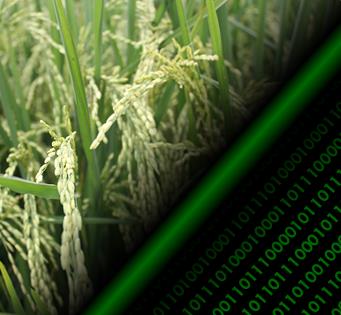Boundaries and perspectives from a multi-model study on rice grain quality in Northern Italy.
 |
2018 - Field Crops Research, 215, 140-148. |
 |
Cappelli, G., Confalonieri, R., Romani, M., Feccia, S., Pagani, M.A., Cappa, C., Bocchi, S., Bregaglio, S. |
Abstract:
Grain quality is crucial to meeting market demand and preserve the sustainability of the European rice sector. However the relationships between agro-meteorological conditions and major features of pre-harvest quality are not well understood. The evaluation of available models is needed to assess their suitability for predicting grain quality for different environmental conditions. This study presents a multi-site and multi-year evaluation of 26 models for the simulation of rice grain composition, milling quality and cooking quality, in the main European rice district (Northern Italy). The analysis was performed using data from 16 sites where the cultivars Loto (japonica) and Gladio (tropical japonica) were grown in 2011–2014. Model performances denoted models’ ability to reproduce grain quality variables, with increased modelling efficiencies (EF) from grain composition
(−0.78 < EF < 0.62; median =0.34) to cooking quality (−0.09 < EF < 0.85; median =0.44). In general, models based on biological parameters (0.18 < EF< 0.85, median =0.52) performed better than those that include empirical coefficients (−0.78 < EF < 0.80, median =0.29), with the best results achieved for proteins, breakdown viscosity and pecky grains for Loto cultivar (0.04 < EF < 0.85, median =0.65). The calibration of cultivar-specific coefficients, led the models based on empirical parameters to the best balance between goodness-of-fit and complexity, thus resulting as a possible alternative to models using biological parameters under the explored conditions.
(−0.78 < EF < 0.62; median =0.34) to cooking quality (−0.09 < EF < 0.85; median =0.44). In general, models based on biological parameters (0.18 < EF< 0.85, median =0.52) performed better than those that include empirical coefficients (−0.78 < EF < 0.80, median =0.29), with the best results achieved for proteins, breakdown viscosity and pecky grains for Loto cultivar (0.04 < EF < 0.85, median =0.65). The calibration of cultivar-specific coefficients, led the models based on empirical parameters to the best balance between goodness-of-fit and complexity, thus resulting as a possible alternative to models using biological parameters under the explored conditions.
 |
Keywords: Amylose, milky white grains, milling quality, model comparison, protein, starch viscosity |
 |
DOI: 10.1016/j.fcr.2017.10.014 |
- Comparison of three calibration methods for modeling rice phenology
- A simple pipeline for the assessment of legacy soil datasets: An example and test with soil organic carbon from a highly variable area.
- A high-resolution, integrated system for rice yield forecasting at district level.
- Downscaling rice yield simulation at sub-field scale using remotely sensed LAI data.
- Analysis and modelling of processes involved with salt tolerance and rice.
- Estimating crop nutritional status using smart apps to support nitrogen fertilization. A case study on paddy rice.
- Development of generic crop models for simulation of multi-species plant communities in mown grasslands.
- Quantifying uncertainty due to stochastic weather generators in climate change impact studies
- Predicting rice blast disease: machine learning versus process-based models
- Boundaries and perspectives from a multi-model study on rice grain quality in Northern Italy.




